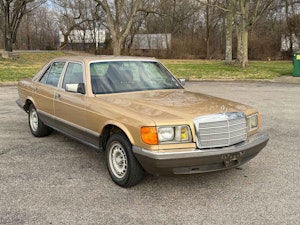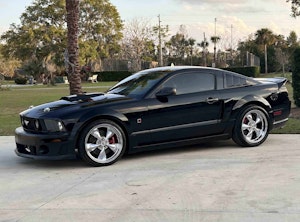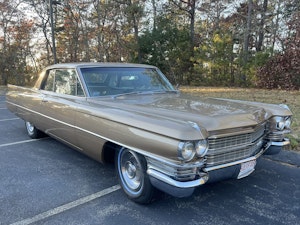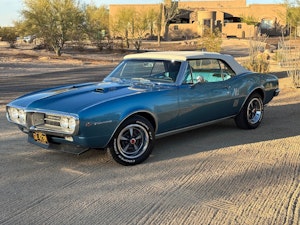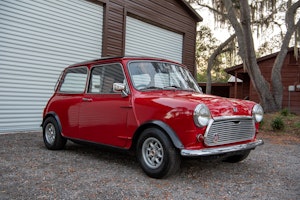Media | Articles
Millionaire’s Muscle: The Plymouth Hemi ’Cuda
Logic dictates that buyers searching for peak performance should choose a model that offers the most horsepower with the least weight. That, in a nutshell, is why convertibles, weighed down with structural reinforcements, are rare finds among the top predators from Detroit’s muscle car glory days.
When that drop-top is a 1970-’71 Plymouth ’Cuda convertible — one whose engine compartment is stuffed full of 426-cid Hemi V-8 — the scarcity rockets the price to the muscle car stratosphere’s outer reaches.
Earlier this year, two Hemi ’Cuda convertibles each sold for more than $2 million at the Mecum Auctions Kissimmee, Fla., sale. One was a four-speed car with the Super Track Pack option in Lemon Twist Yellow livery, at $2.7 million. Its automatic-equipped counterpart, in Sno-White paint and plain steel wheels, sold for $2.3 million. Neither came close to the Hemi ’Cuda auction sale record set in 2013, however — $3.5 million for the only four-speed convertible built in the deep purple hue known as Plum Crazy — but still, not too shabby.
And not a bad return on investment for any visionary owner, if indeed one exists, who may have purchased the car new. The base price in 1970 for the ’Cuda convertible was $3,040. Drag strip and street-racing purists ticked the box for the Hemi option, adding $871.45 to the window sticker.
Widely admired for its fresh, cleanly executed long-hood/short-deck styling and broad range of engines at its fall of 1969 debut, Plymouth’s new E-body pony car competitor came in three trim levels. Least expensive was the Barracuda, available in both coupe and convertible, with a 198-cubic-inch Slant Six as the base engine. The next step up was the more sumptuously appointed Gran Coupe, a bit of a misnomer as it was also available as a convertible.
Marketplace
Buy and sell classics with confidence
For Mopar performance lovers, however, it was all about the top ’Cuda model with engine choices that began with the 275-horse 340-cid V-8 and included 383- and 440-cid options. The 440 was available with the Six Pack trio of two-barrel carburetors.
At the top of the food chain was the race-proven 426 Hemi, now more civilized thanks to hydraulic valve lifters. The Hemi’s pair of Carter AFB four-barrel carburetors took deep breaths through a standard Shaker hood scoop. A combination air intake and air-cleaner, the Shaker scoop was controlled manually via a lever under the instrument panel. The scoop’s visual appeal — it rocked and rolled slightly with the Hemi’s rumpa-rumpa idle — was complemented by the racecar-style hood retainer pins.
With the Hemi “elephant motor” came a four-speed manual gearbox actuated by a pistol-grip Hurst shifter. The Track Pack (option code A33) included a Dana 60 rear axle with 3.54 final drive ratio and heavy-duty engine cooling system. The Super Track Pack (option A34) brought 4.10 gears and front disc brakes. Chrysler’s heavy-duty three-speed Torqueflite automatic was optional.
Compared with the previous-generation 1968-’69 Barracuda, which was based on the Valiant economy sedan’s A-body platform, the all-new 1970 E-body Plymouths were five inches wider and two inches lower. And while a fastback body style was considered as a way to carry on the 1964-’69 Barracuda tradition, the design team led by John Herlitz team presented only a notchback and convertible.
Flush door handles, still novel at the time (as was the curved side glass), helped give the exterior door surface a clean look. Herlitz also specified elastomeric flexible bumpers for some body colors — the ‘Cuda’s palette offered many whimsically named shades including Plum Crazy and Panther Pink, plus Sublime, Lemon Twist, Sassy Grass Green and Hemi Orange.
Today’s appraisal values for the ultra-desirable Hemi ’Cudas reflect the low buyer interest during the cars’ two-year production run. Of the 50,627 Barracudas of all types sold in 1970, only 666 were Hemi cars — and just 14 of those were convertibles. The 440 Six Pack option was more than twice as popular, selling 1,784 units, according to Chrysler.
Changes for ‘71 included the addition of two headlights, a new six-segment “cheese grater” grille and four gill-like vertical trim “vents” on the trailing edge of the front fenders. Vinyl tops were available in black, white, gold and green. A new option was the rear window louvers, influenced by period Trans-Am race cars, plus a rear spoiler.
Sales in 1971 dropped off dramatically, with Hemi V-8s installed in only 115 ’Cudas (including 7 convertibles!) out of 16,159 total units. By comparison, the ’Cuda’s Hemi-powered Challenger R/T cousin is an even rarer beast, with 356 Hemi cars (nine convertibles) leaving Dodge showrooms in 1970. A paltry 71 Hemi Challengers were sold in 1971.
Though the Hemi ’Cuda made its mark in NHRA Super Stock racing, Chrysler’s King Kong V-8 met its end in 1971, a casualty of the new Clean Air Act regulations. The Hemi would be too expensive to make emissions-compliant without stifling its performance. The E-body cars themselves lasted only through the 1974 model year, but their 1970-’71 legacy lives on.



